About the Brandwein Institute
To inspire all people to embrace the wonders of nature.
The Brandwein Institute Statement on Social Justice
As has become highly visible during recent injustices and protests, racism continues to harm individuals, families, and communities. The Brandwein Institute, as a national and international convener, catalyzer, and communicator of nature-based science education, supports social and environmental justice for all. We commit to challenging and removing inequities as we advance nature-based science education that enables all children and families to experience nature firsthand. We do this by facilitating nature experiences in safe and welcoming settings and promoting access to nature-based science education, honoring achievement and leadership in conservation endeavors, and inspiring a commitment to nature for all.
The Institute’s mission is “To inspire and teach all people, especially children, to embrace the wonders of nature.” Paul Brandwein posed the question “Can we teach children to value others in their own right – if we do not value them?” This is key to achieving social justice. This is why teachers play such a vital role in reinforcing the values of social justice.
We, as the Directors of the Brandwein Institute, believe we are all teachers. As such, the Brandwein Institute is committing to the following actions that teach through leadership, words, and actions.
First – Provide scholarships to underserved minority children to attend Brandwein Summer Science Camps and provide access to underserved families to attend Brandwein Nature Learning Preserve Programs.
Second – Use our national platforms including the Brandwein Medal, Brandwein Lecture, and new Young Professional Award to recognize, amplify, and further the conservation achievements of diverse and under-represented peoples throughout the world.
Third – Award a scholarship annually to an under-represented high school senior who is going to college to major in environmental studies.
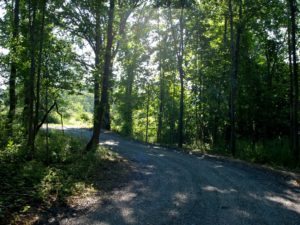
The Rutgers Creek Wildlife Conservancy, Greenville, NY
The Paul F-Brandwein Institute, Inc. is located in Greenville, New York on the 77-acre Rutgers Creek Wildlife Conservancy conservation preserve. The Conservancy consists of wooded, old field succession housing diverse wildlife habitats traversed by stack stone walls and bisected by Rutgers Creek. The preserve is surrounded by active dairy farms and growing residential development in the rolling wooded hills near the town of Greenville, Orange County, New York, close to the New Jersey and Pennsylvania state lines. It is being used by students, teachers, scientists, and other lifelong learners for studies of the environment and natural systems.
Two houses sit adjacent to the Rutgers Creek Conservancy, the Brandwein’s home, a farmhouse dating from about 160 years ago, and the former residence of Evelyn Morholt (More information on Evelyn Morholt). The Morholt residence houses early specimen collections.
The Brandwein Nature Learning Preserve is located on 30 acres of the Rutgers Creek Wildlife Conservancy, about 25 minutes from downtown Milford, PA, 15 minutes from Port Jervis, and 25 minutes from Middletown, NY.
Directions:
- Take Interstate 84 to Exit 2 on Mountain Road in New York State
- Turn left at County Route 35/Mountain Road 1.0 miles (Cross U.S. Route 6 at blinker light)
- Turn left at Minisink Turnpike, and another 0.2 mile to the Brandwein Nature Learning Preserve on the right. Pull into the entrance drive and park in the bus parking area.
Brandwein Institute brochure (PDF)
The Brandwein Institute Headquarters
390 Minisink Turnpike, Port Jervis, NY 12771
Send us a message.
Brandwein Nature Learning Preserve
Ask us about BNLP.
845-672-9297.
A video introduction to the Brandwein Institute and the Brandwein-Morholt Trust, 2008:
Board of Directors
The Brandwein Institute Board consists of conservationists, educators, lawyers, and business people who meet several times a year to plan the direction and activities of the organization
 | William D. Bavoso is a founding member and is Chairman of the Brandwein Board. He is an attorney and a former President of the Orange County, New York Bar Association. In 2012, he was presented with The John S. McBride Lifetime Achievement Award by the Orange County Bar, “In Honor and Recognition of Excellence in The Practice of Law and The Highest Professional and Ethical Standards.” He resides with his wife, Sharon, in the former home of Dr. Paul F- and Mary Brandwein and across from the Brandwein Nature Learning Preserve. |
 | David Bavoso is President of the Brandwein Institute. He is a Managing Partner at Bavoso & Plotsky, Esqs. Law Firm where his practice covers real estate transactions, wills, trusts and estates, business and corporate matters, and municipal law. He serves as Councilman at Large for the City of Port Jervis. David serves on the Board of Trustees of the Port Jervis First Presbyterian Church where he is also an Ordained Deacon. |
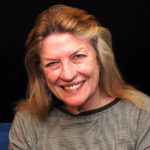 | Cheryl Charles, Ph.D., is Co-Founder and President and CEO Emerita of the Children & Nature Network (www.childrenandnature.org). She currently coordinates the Network’s international activities. Cheryl is also Adjunct Faculty and founding Executive Director of the Nature-Based Leadership Institute at Antioch University New England (AUNE). |
 | Jeff Rosalsky is Treasurer of the Brandwein Institute. He is the former Executive Director of the Pocono Environmental Education Center, in Dingmans Ferry, PA. He spearheaded the creation of PEEC’s unique EcoZone Discovery Room in an old indoor pool space, created new programs for urban youth, and created opportunities for the public to participate in citizen science. |
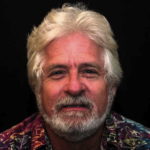 | Edwin (Win) Everham is Professor of Marine and Ecological Sciences at Florida Gulf Coast University, Ft. Myers, FL. His research involves examining the impacts of disturbance on the structure of ecosystems and measuring and monitoring change in the restoration of ecosystems. |
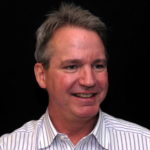 | David Foord is the Brandwein Institute Vice President. He is Senior Program Coordinator for the 4-H Youth Development Program in Sussex County, New Jersey. He also oversees technology adoption and integration for New Jersey 4-H, Rutgers Cooperative Extension. Dave has also served as the Director of the Dutchess County Environmental Management Council. |
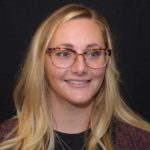 | Kasey Stankunas teaches Earth Science, AP Environmental, and Forensics courses at the Port Jervis High School in Port Jervis, NY. It is her goal to foster in her students a love and appreciation for the environment. In addition to her classroom teaching, she spends her time administrating and directs the Brandwein Nature Science Camp as well as coaching varsity high school softball and volleyball. |
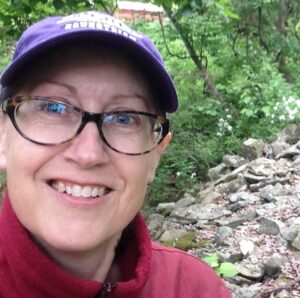 | Sara Mayes is the interpretive naturalist for the Brandwein Nature Learning Preserve. She has a Bachelor of Science degree in Biology from Ball State University. For over three decades, she has dedicated her entire career as a professional naturalist to nature-based education, inspiring others, especially children to discover the wonder, beauty, and importance of the natural environment. |
Emeritus Directors
| Mary Brandwein (1912-2006) was first chairwoman of the Brandwein Institute. She created the Institute to honor her husband Paul F-Brandwein’s Legacy, and to perpetuate conservation and education initiates that she and her husband held dear. Following her death, the Brandwein Institute Board established the Mary Brandwein Endowment Fund to help further programs that Mary and Paul Brandwein believed in and supported. | 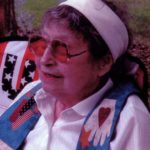 |
| Henry Burger (1926-2022) is former emeritus Chairman of the Board of the Brandwein Institute. He served as senior partner of a medium-sized CPA firm in New York. He has had a lifetime interest in education and the outdoors. | 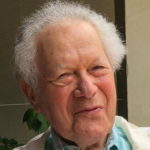 |
| William Hammond is Professor Emeritus, Florida Gulf Coast University and Founder of Natural Context Consulting. He has worked as a K-graduate-level educator at Lee County Schools, and Simon Fraser and Royal Roads Universities. | 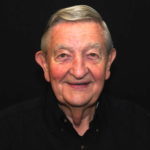 |
| Marily DeWall (1942-2023) is former Secretary of the Brandwein Institute. Her career in science education includes serving as Associate Director of the National Science Teachers Association and as Director of Professional Development for the JASON Foundation for Education. |  |
| John Padalino is President emeritus of the Brandwein Institute, Pocono Environmental Education Center, and John Burroughs Association. He is past president of the American Nature Study Society, National Science Education Leadership Association, and Sussex County Bird Club. | 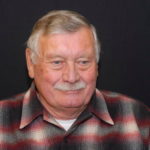 |
| Alan Sandler is the former Treasurer of the Brandwein Institute and is Executive Director of the Architectural Foundation of San Francisco (AFSF). | 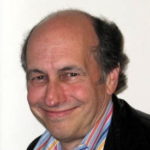 |
| Keith A. Wheeler is emeritus President of the Brandwein Institute. He was the Chairman and CEO of ZedX Inc., which was recently acquired by BASF. Keith has held leadership roles focused on conservation, sustainability, education and communication. | 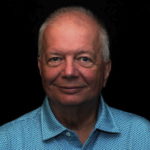 |
| Jerry Dellheim (1951-2021) was a board member of the Brandwein Institute. He was Senior Investor Relations Professional and Vice President of Strategic Marketing for ASM Pacific Technology Ltd., San Francisco, CA and was responsible for investor relations activities in North America and Europe. |  |
Retired Directors
Steve Hulbert served on the Board from 2006 to 2011.
Mark Schaeffer served on the Board from 2014 to 2019.
Dan Bisaccio served on the Board from 2012 to 2020.
Brad Smith served on the Board from 2012 to 2024.
Lisa Janeway served on the Board from 2014 to 2025.
1995
An initial meeting among Mary Brandwein, Brandwein-Morholt Trust, Jack Padalino, Pocono Environmental Education Center (PEEC), Bill Hammond, Natural Context, and Alan Sandler, American Institute of Architects, Marily DeWall, National Science Teachers Association (NSTA), and Keith Wheeler, Global Rivers Environmental Education Network (GREEN) provided core ideas for a collaborative relationship between the Pocono Environmental Education Center (PEEC) and the Brandwein-Morholt Trust. These individuals met from 1995-1998 acting as an independent and active working group to lead to form the Paul-F Brandwein Institute.
1996
The Paul F. Brandwein Lecture series was established as an ongoing session at the National Science Teachers Association Annual Meeting. The first lecture was delivered by Dr. William Stapp, Professor Emeritus, Department of Environmental Education, University of Michigan.
Several field studies and baseline data collections were initiated by the Brandwein Institute and begun on the Rutgers Creek property. Field botanist, Bill Olson, began a vascular plant collection that resulted in the identification of over 350 species.
1998
A three-day retreat was held in November where educators and scientists gathered to identify issues to be addressed by the Brandwein Institute.
The Institute received a grant from the Toyota USA Foundation to plan and run three years of Summer Leadership Institutes for teachers at the Rutgers Creek Wildlife Conservancy.
The discovery of the endangered specie, Davis’ sedge (Carex davisii), was made by field botanist Bill Olson on the Rutgers Creek Wildlife Conservancy.
1999
The Institute was incorporated as a not for profit (501c3) organization, known as the Paul F-Brandwein Institute, Inc. Bylaws were written and approved, and the Board of Directors elected with Mary Brandwein serving as Chairwoman.
2000
The first Summer Leadership Institute was held, July 28-August 6, with 20 teachers and numerous resource people. Teachers learned to implement long-term ecological research and techniques for use with students.
2001
The second Summer Leadership Institute held, July 19-29, again with 20 teachers and research scientists, implementing long-term ecological research, integrating field-based inquiry with technology, and exploring assessment strategies.
2002
The third Summer Leadership Institute held, July 18-28, with 20 teachers and numerous resource people. Kelly Nolan, an instructor for the summer institutes, wrote a report entitled A Rapid Assessment of the Upper Class C(T) Reach of the Rutgers Creek, Orange County, New York, which summarized the results of aquatic and terrestrial studies on Rutgers Creek Wildlife Conservancy, conducted July 2001, by Brandwein Summer Leadership Institute Fellows and the Hudson Basin River Watch Rapid Bioassessmernt Team with entomological assistance from the New York Department of Environmental Conservation Stream Biomonitoring Unit.
Fungal forays were initiated on the Conservancy grounds by members of the New Jersey Mycological Association. Since 2002, over 500 species have been identified on the property.
David Foord was elected to the Board in 2002.
2004
The Institute Board of Directors voted to host a conference on conservation education to commemorate a conference held 40 years previous, led by Paul Brandwein and his colleagues at the Pinchot Institute. An Advisory Committee, comprising members from many organizations, collaborated in the planning of the Conservation Learning Summit.
2005
The Conservation Learning Summit (CLS) was held, November 4-6, with representatives from 75 government agencies, academia, nongovernmental organizations, philanthropy, and business, to discuss critical issues of conservation education and the workforce.
2006
Proceedings from the Conservation Learning Summit were printed and distributed. A press briefing was held in May to announce the results of the CLS. Richard Louv was the featured speaker.
The Institute Board of Directors approved the “Brandwein Medal” to be given each year to an individual or organization whose focus is in keeping with Paul and Mary Brandwein’s commitment to education, life-long learning, nature, and community.
On September 4, Brandwein Institute Chairwoman, founder, and driving force Mary Brandwein passed away after a brief illness.
Steve Hulbert and Cheryl Charles were elected to the Board of Directors.
2008
The Board funded an Advisory Board meeting for the Build San Francisco Network. The Advisory Board, consisting of luminaries in the field of conservation, planned an architectural design program for students along with a training program for teachers.
The Institute Outreach Office was opened at the historic Callahan House, Milford, PA, in cooperation with the National Park Service.
2009
The Board funded the creation of interpretive trails on a 30-acre parcel of the Rutgers Creek Conservancy, and an official ground breaking ceremony was held. The property was designated as the Brandwein Nature Learning Preserve (BNLP).
2012
Upon completion of the trails, boardwalks, pavilions, information kiosks, and benches, the formal dedication of BNLP was held. Dan Bisaccio and Brad Smith were elected to the Board of Directors.
2014
Mark Schaefer and Lisa Cashel Janeway were elected to the Board of Directors.
2015
The Institute hosted a three-day conference, “Inspiring a New Generation North American Summit” that was held at the National Conservation Training Center in Shepherdstown, WV. Nearly 200 participants came from the U.S., Canada, and Mexico as well as few few from other countries, including Brazil, Peru, Australia, Italy, and China.
2016-2018
Two-week Summer Science Camps and Sundays at the Preserve, featuring various naturalists and activities, were held at the BNLP.
Kasey Stankunas was elected to the Board of Directors.
David Bavoso was elected to the Board of Directors.
The Board of Directors Succession Plan went into effect on January 1, 2019 with three members retiring to Emeritus Status: Henry Burger (Chairman), William Hammond, and John Padalino. Three new Board Members were elected to replace them: Jerry Dellheim, Edwin Everham, and Jeff Rosalsky.

Kasey Stankunas

David Bavoso

Jerry Dellheim
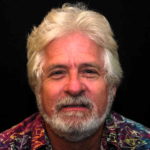
Win Everham

Jeff Rosalsky
2019-2021
Programs were on hold during the pandemic.
Three members retired to Emeritus status: Marily DeWall, Keith Wheeler and Alan Sandler.
2022
Summer Science Camps and Sundays at the Preserve were held at BNLP.
Paul F-Brandwein (1912-1994)
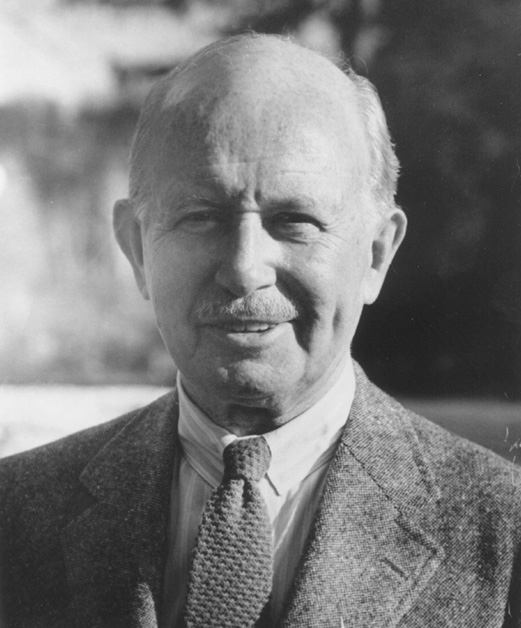
Paul F-Brandwein
Author, Scientist, Teacher, Humanitarian, Philosopher, Conservationist
Scientist
Born in 1912, Paul F-Brandwein emigrated from Austria prior to WWII. Paul’s interest in science began quite early, partially owing to the time he had spent in hospitals as a young man for childhood arthritis. Though the condition cut short a career in piano, his love for the instrument remained strong throughout his life. PFB became an assistant at the Littnauer Pneumonia Research Laboratory in New York where he worked while completing his bachelor of science from New York University. This early start in original research had a great impact on the direction of his studies and philosophy on education. By 1940, upon completion of his masters and doctorate studies at NYU, PFB was secure in the belief that “the best way to encourage the young in science was to help them early to do original work”.
Teacher
Paul’s experience as an educator began at George Washington High School. He moved on, through the 1940’s and into the mid 50’s, to serve as a member and later as chair of the science department at Forest Hills High School. Here he piloted a program encouraging students to do original work in science. It has been suggested that more of Paul’s students won the prestigious Westinghouse Science Talent Search that those of any other teacher.
Author
An accomplished author, PFB began publishing science textbooks in 1946, revolutionizing the way science was taught throughout the country. Disappointed with lecture and textbook based teaching, Paul developed classroom materials based on investigation, research, and analysis. His widely used grade-specific series, Concepts in Science, pioneered the style of hands-on, investigative, science education that generations of children have come to experience as the norm. Even so, Paul remained aware of the limitations inherent in any textbook. To forward innovative education methods he joined with scientists and educators on the Sputnik science project. Additionally he served on the Steering Committee of the Biological Sciences Curriculum Study, as chair of its Gifted Student Committee, and as consultant to the Physical Science Study Committee. Through these committees, PFB strengthened the presence of programs designed to interest high school students in science through “originative” inquiry.
Humanitarian
Always concerned with and committed to a vision of equity in education, PFB strived to improve education for the students he believed to be most neglected: the disadvantaged and the gifted. He once said, “We do pretty well for the 80 percent of the students in the middle. But the 10 percent at the top and the bottom: we grind them under our feet!” Based in his belief of equal access to opportunity, he promoted self-selection by interested students- rather than assignment based on testing.
Philosopher
Lifelong research and experience with education led Paul to develop the concept of an “ecology of achievement” whereby “the school-community ecosystem acts in mutualism with cultural and university ecosystems.” With this scientific analogy to the relationships of students, educators, scientists, and the community at large, PFB expresses the necessity for integrating education with life and community. Drawing a distinction between “schooling” and “education” PFB emphasized the impact of the community on the school rather than vice versa. Refusing to allow schools to shoulder the blame for society’s ills, he saw the quality of schools as symptomatic of the state of the community. “Specific communities get the kind of schools their economic and social conditions permit; it is simplism itself to blame schools for the plight of the community or of society.”
Conservationist
In addition to his involvement with primary and secondary education in America, PFB participated in many roles with graduate and undergraduate institutions throughout the world. He became education director and later co-director of the Pinchot Institute for Conservation Studies at Grey Towers in Milford, Pennsylvania. This position combined his interests in education and conservation. The property where he and his wife, Mary, made their home was also intended to realize this commitment to conservation. The Rutgers Creek Wildlife Conservancy established by Paul and Mary has been administered by the Brandwein-Morholt Trust since Paul’s death in 1994. In affiliation with the Pocono Environmental Education Center, the Conservancy serves as a site for educational programs and research. The Paul F-Brandwein Institute advances Paul’s intention for the land as a place of learning and discovery for students, teachers, scientists, and those interested in natural systems and the environment.
